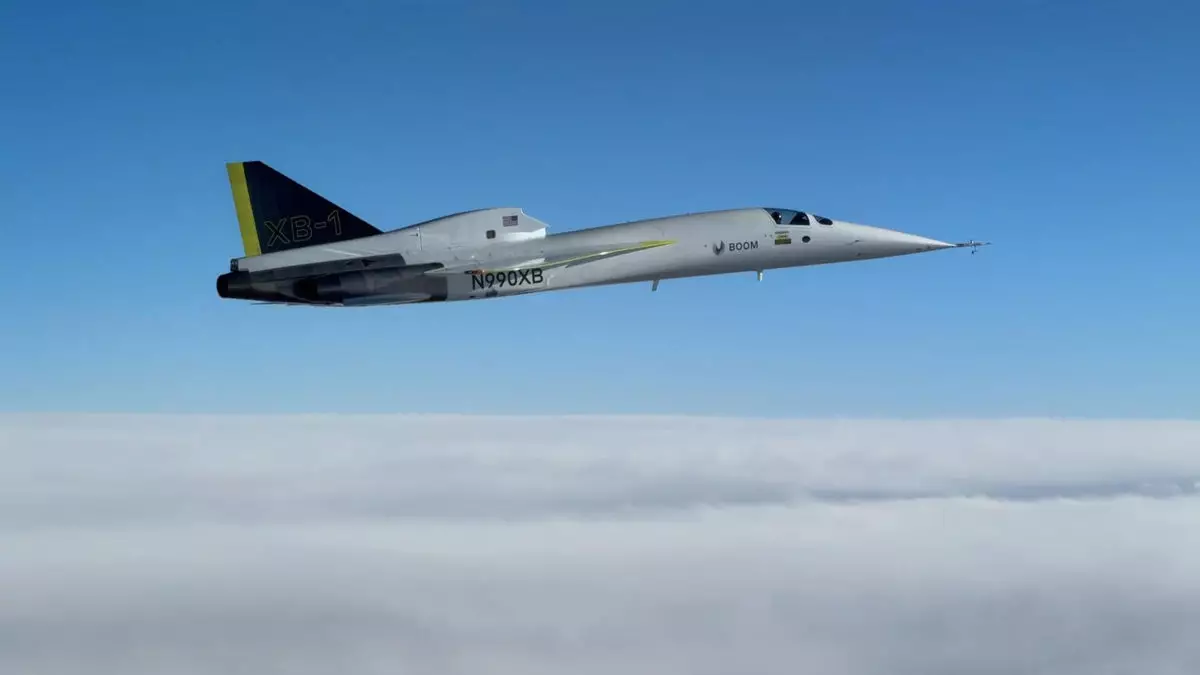In a significant milestone for aviation, Boom Supersonic has achieved what many in the industry thought was merely a dream—supersonic flight for a commercial aircraft. On a testing day in the California desert, the company’s XB-1 prototype soared above the sound barrier, turning heads and reigniting excitement for passengers yearning for faster travel options. Blake Scholl, Boom’s CEO, enthusiastically proclaimed this moment as a call to action, advocating for a resurgence of supersonic travel that remains accessible and practical for mainstream air travel.
Supersonic aircraft have often been the stuff of legends, with the Concorde as a primary example. However, with this recent test flight, Boom aims to redefine what is possible in commercial aviation, promising an era where time-saving travel becomes a standard rather than a luxury.
The XB-1 test flight is only the beginning of a much larger vision for Boom Supersonic, which is in the process of developing the Overture aircraft. This airliner is designed to accommodate between 64 and 80 passengers and aims to take to the skies by the end of the decade. While the XB-1 serves as a vital testbed for innovations and design features, Overture will leverage these insights to build a supersonic experience that is both efficient and comfortable.
Importantly, Boom’s development is not just about achieving speed; it’s about making supersonic flights environmentally responsible. The industry has faced significant scrutiny over its environmental impact, and Boom aims to address these concerns by developing a sustainable approach to supersonic air travel.
Behind every successful aircraft lies an engine that not only powers it but does so efficiently and sustainably. Boom has taken on the task of developing its engine, the Symphony, since major manufacturers like General Electric and Rolls-Royce showed hesitation. While the XB-1 is currently powered by older General Electric J85-15 engines, Boom recognizes that the success of the Overture hinges significantly on the development of a new, modern engine.
Scholl has expressed optimism regarding the Symphony engine, indicating that the first operational iteration will be ready by year-end. Yet, skepticism remains prevalent among industry experts like Richard Aboulafia, who points to the reliance on outdated technology as a key vulnerability in Boom’s strategy. The next steps in engine development will be critical to determine whether Boom can deliver on its promises.
As Boom navigates through its ambitious plans, it faces the ultimate challenge: gaining the confidence of potential customers and investors in a market historically fraught with failed promises. The initial hype surrounding supersonic travel has been tempered by years of technological stagnation and environmental concerns. To make Overture a practical success, Boom must demonstrate that not only can it break the sound barrier, but it can do so while addressing the challenges that the airline industry faces today.
Scholl acknowledges the herculean tasks that lie ahead but insists that Overture will not just be a prototype project—but a tangible step toward a transformed air travel landscape. The hurdles in the development process will require unwavering commitment and innovative thinking from the Boom team.
While the achievements of Boom Supersonic are commendable, the road ahead is fraught with challenges. From proving that newly developed engines are reliable and efficient to ensuring that the public can embrace this next era of travel, success is not guaranteed. However, with a combination of technological progress, market insight, and perhaps a little luck, Boom could very well usher in a return to supersonic flight.
For aviation enthusiasts and travelers alike, Boom’s advancements are a tantalizing glimpse into the future. If successful, they could redefine long-haul flights, allowing people to traverse vast distances not just quickly but also sustainably. It remains to be seen whether Boom Supersonic can live up to its aspirations, but one thing is certain: the sky is no longer the limit.


Leave a Reply